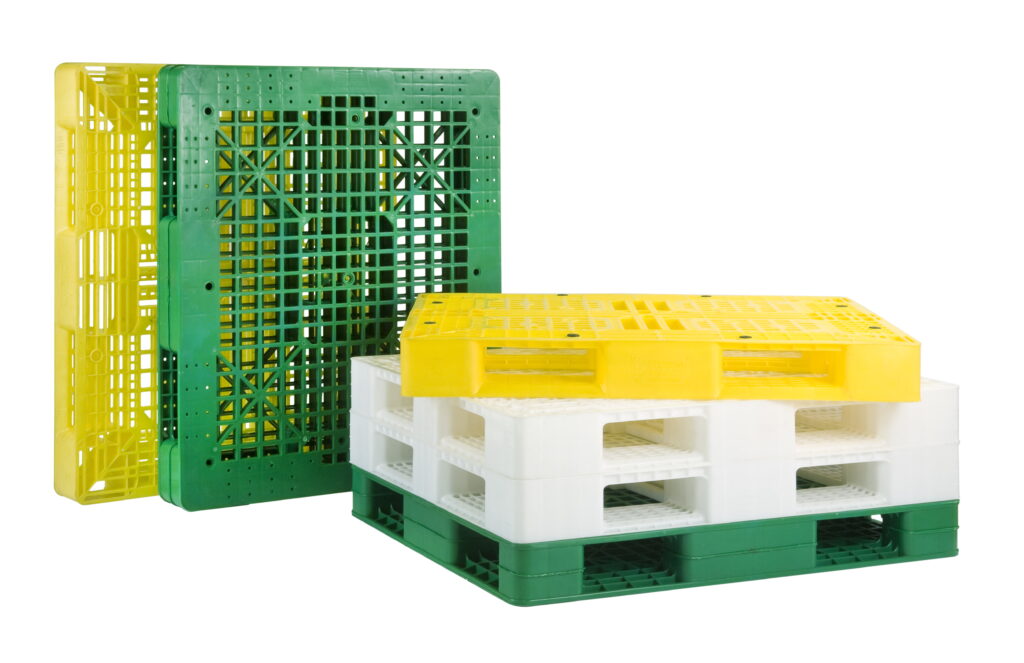Is it important to choose plastic pallets in terms of material and method of production? The answer is yes, and it directly relies on what application you want to use for the plastic pallets. The requirements in your industry clarify what type of production method and material is appropriate. Does pallet material matter? it is important to chose the right material of the plastic pallet for your applications. There are different types of plastic pallets based on the material and the production method we are tending to describe; Injection molding, Blow-molding, Roto-molding and Fiber glass production methods.
1- Injection Molded Plastic Pallet
In the injection molding method, the plastic pallets are produced by melting the plastic granule/scrap material in a cylinder with the help of an extruder and injected into the mold homogeneously. Afterward, the mold will open, and the uniform plastic pallet will be ready. One of the most significant properties of this production method is the ability to produce intricate details in the pallets. Broadly two types of plastic material are used in this method: High-Density Polyethylene injection grade (HDPE) and Polypropylene injection grade (PP); other materials are also used, which are briefly explained below:
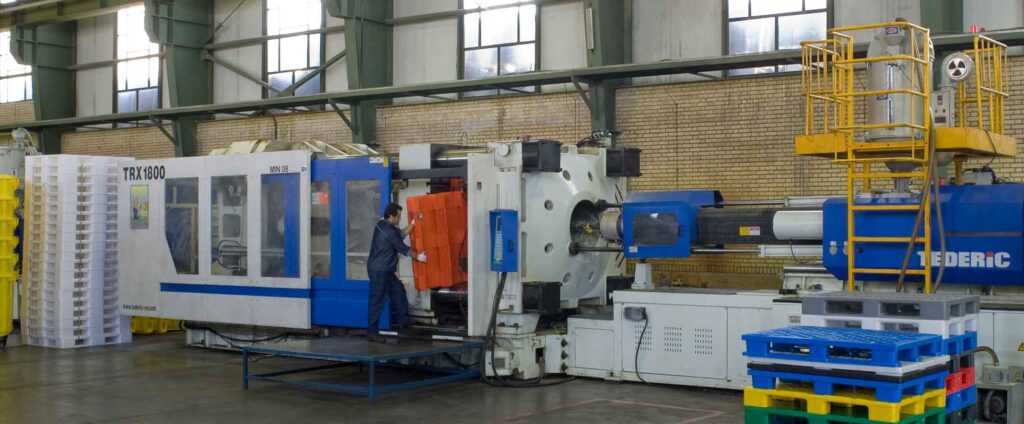
- High-density Polyethylene Plastic Pallet (HDPE)
Mostly, plastic manufacturers use HDPE injection grade for plastic pallet injection molding. HDPE plastic pallets are used mostly due to the versatility, durability, corrosion resistance, and strength of the material and, in particular, cost-effectiveness. Users are seeking the best price for plastic pallets; therefore, the HDPE plastic pallet is the best choice among others. Besides economical price, the durability and usefulness of HDPE make the material so common in producing many plastic parts, including plastic pallets. HDPE material guarantees impact and hit resistance, weatherproofing, and stability. HDPE plastic pallets are tough, dense, and durable during transportation and, hence, can absorb sudden shock and retain their strength.
It should be taken into consideration that HDPE pallets are divided into two categories; virgin HDPE and recycled HDPE. For those with experience in the plastic industry, it is transparent that plastic pallets based on the material and the production method are important. Those made of virgin material injection modeling have more strength, durability, resistance, and stability.
On the one hand, these characteristics are also in recycled HDPE pallets but might be weaker in terms of impact and load capacity. On the other hand, today’s technologies and modern material engineering open an opportunity to produce well-injected plastic pallets from high-quality recycled HDPE. Consequently, the material, virgin or recycled, is usually dependent upon the proposed application. Virgin materials are recommended for hygienic use or high performance. HDPE pallets have a long service life, good corrosion and heat resistance, and are resistant to most chemicals. HDPE plastic pallets are stable under all climatic conditions. Therefore, any compatible hand jack or forklift can move the pallets over time.

- Polypropylene Copolymer Plastic Pallet (PP)
We have explained HDPE plastic pallets in terms of material and the production method. Another alternative material through injection molding production method is Polypropylene Copolymer injection grade (PP). PP plastic pallet has the second rank after HDPE plastic pallets. However, this ranking may differ from continent to continent due to the access to the material. For example, in the US, PP plastic pallets are the most common since it is more cost-effective than HDPE. While in some countries, PP copolymer material is more expensive than HDPE material. Consequently, HDPE plastic pallets are more popular. PP plastic pallets have the same advantage and characteristics as HDPE plastic pallets, while PP plastic pallets are stronger and more rigid than HDPE material. They can withstand severe unharmed abuse, drops, and harsh hits. The PP plastic pallets are sturdily resistant to temperature fluctuations and are compatible with most chemicals, solvents, and acids.
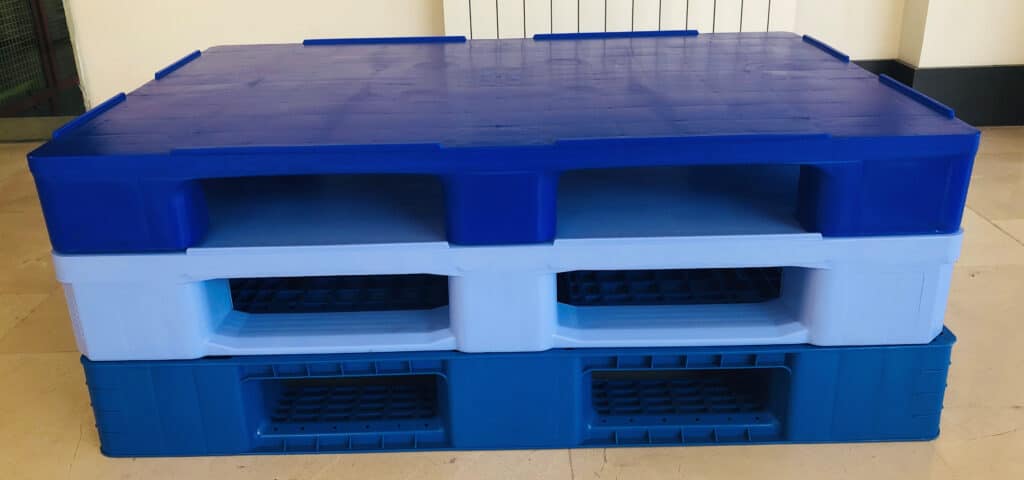
- Polyethylene Terephthalate Plastic Pallet (PET)
Polyethylene Terephthalate, also called PET, is a type of clear, strong, lightweight, and 100% recyclable plastic material. The most common use of PET is to make any type of bottle. However, some use PET material for producing plastic pallets through the injection molding production method. The PET plastic pallet keeps precise dimensions and highly are resistant to corrosion, moisture, liquids, and gases. PET plastic pallets are highly recyclable, and PET flakes for different uses, such as textile, fiber, polyester films, and strapping bands, can be gained.
- Polyolefins Plastic Pallet (PO)
Polyolefins are the largest class of commodity thermoplastics formed by the polymerization of different types of plastic material, such as HDPE, LDPE, LLDPE, and PP, etc. Therefore, Polyolefin is another material to produce plastic pallets through the injection molding production method. These pallets are low-cost, but it is important to know what type of material is blended to produce the pallet. If different unmatched or non-sturdy materials are mixed for molding, the result might not be satisfactory for your applications. The injection process of this type of material is complicated to mold. However, Polyolefins plastic pallets, known as recycled pallets, are a good choice for export plastic pallets or one-way plastic pallets. Because Polyolefins plastic pallets are rigid enough while they are budget-friendly options; however, they are susceptible to moisture and wet condition and brittle against hits and drops while they have a good application in dry conditions.
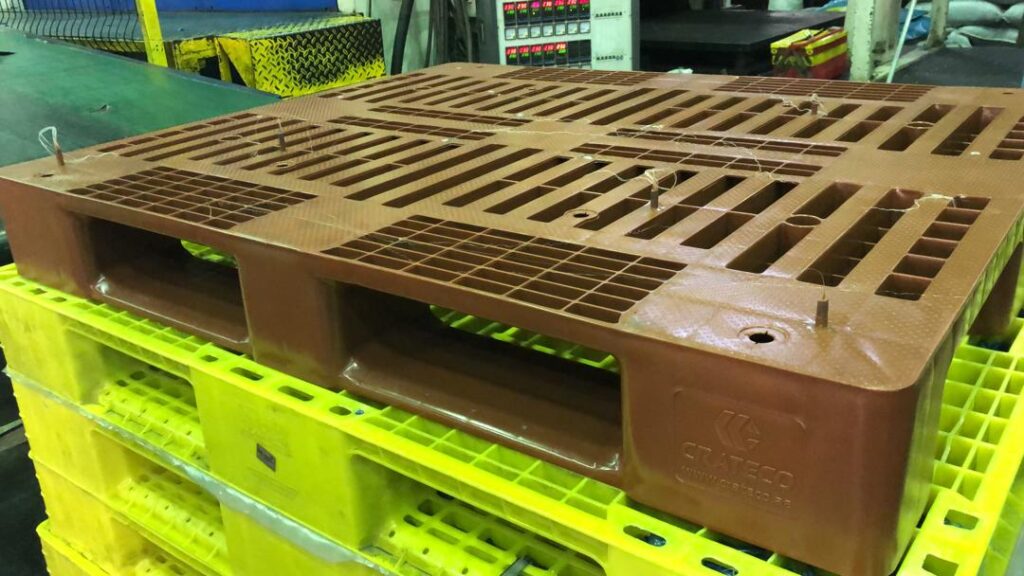
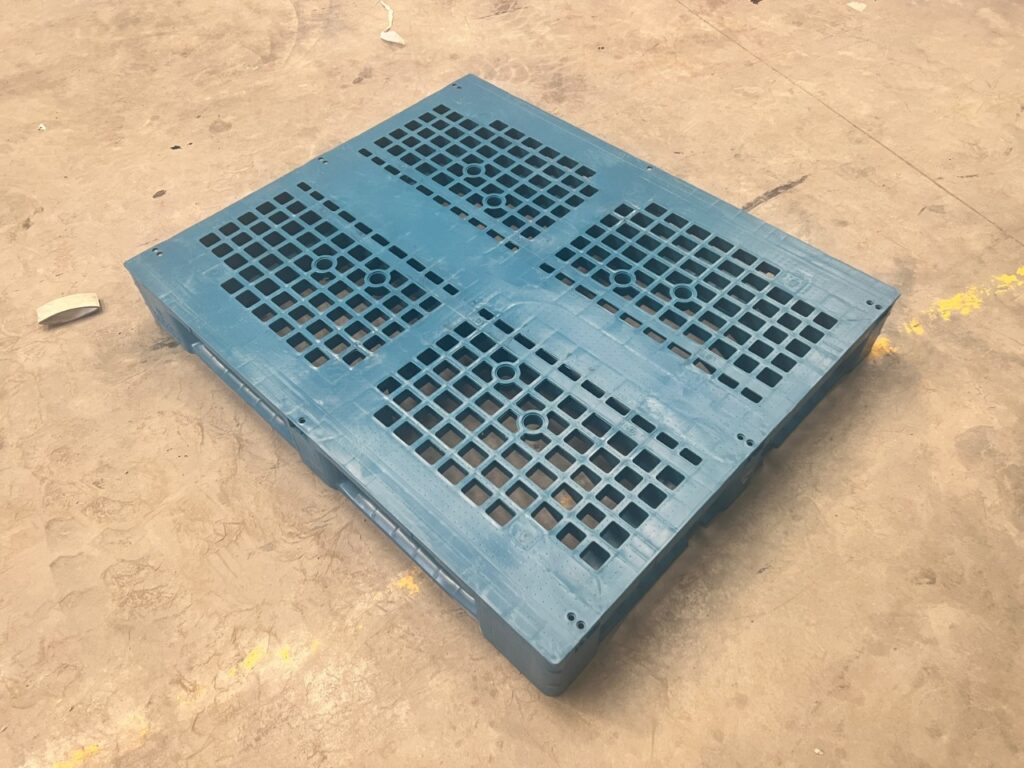
2- Blow-molded Plastic Pallet
The second most popular material and production method of producing plastic pallets are blow-molded plastic pallets which are produced through the blow-molding process. This type of production is completely different from injection molding use compressed air to blow to heated paste plastic material to inflate the plastic into the mold cavity. The blowing cause the melted material to be distributed across the mold cavity’s interior walls and shape the pallet’s configuration. Blow-molded plastic pallets look like twin-walled thermoformed pallets and have a solid, uniform, and closed structure. The thickness of walls is considerably thicker and more robust than injection molded pallets, contributing to higher load capacity, sturdiness, and high impact resistance. The high static and dynamic loading ranges are one of the most important characteristics of this type of production method. The forming of thick walls for pallets means more plastic blow-mold grade material. Additionally, controlling wall thickness, in other words, shaping the uniform walls during the manufacturing blow-molding process, is an important criterion for making reliable blow-molded plastic pallets.
The price of the blow-molded plastic pallet is usually higher than the injection-molded plastic material due to using more material. However, in certain industries, such as in cold storages and winters, blow-molded plastic pallets have proved to be more durable and maintain structural integrity and strength than injection-molded plastic pallets.
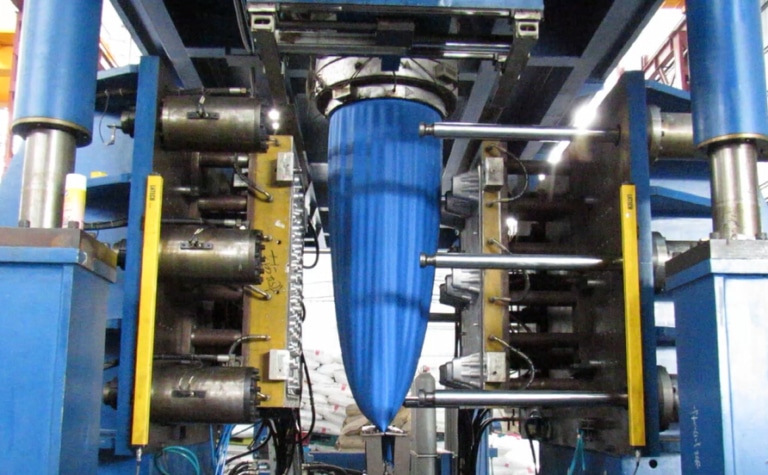
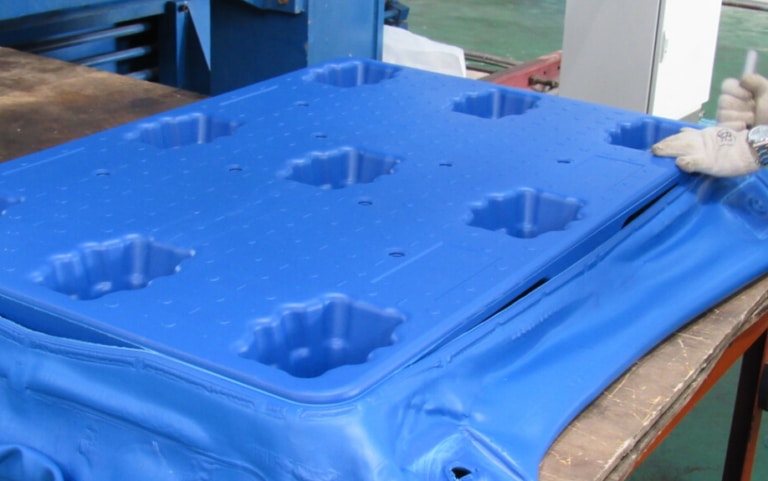
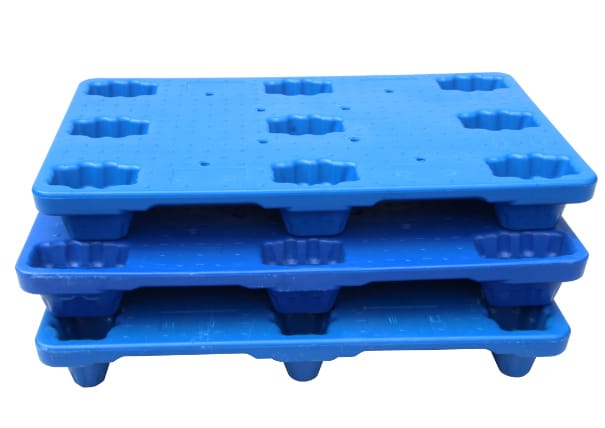
3- Roto-molded Plastic Pallet
Another production method of producing plastic pallets is the roto-molding method. The roto-molding procedure is to pour the roto-molding grade plastic material into a hollow mold. Afterward, the material is heated and rotated simultaneously to melt and, therefore, adheres to the internal walls of the mold cavity. The pallet shapes after cooling, and the mold is taken out. The thickness of the product and here roto-molded plastic pallet need to be calculated and vary on demands and applications.
The uniformed walls, edges, sides, and corners significantly increase the roto-molded pallet’s strength. The molds and tooling system are economical; however, since the roto-molded pallets are too heavy, there is no economic justification to use them in many industrial applications.
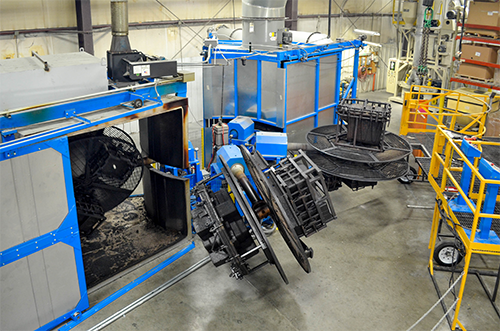
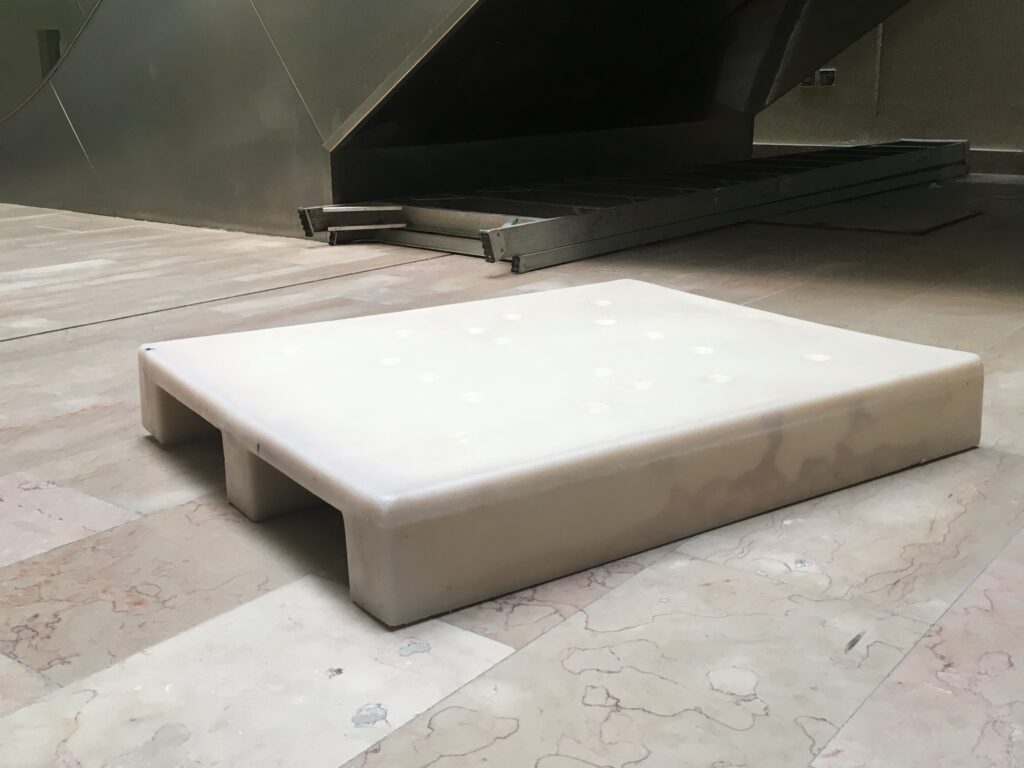
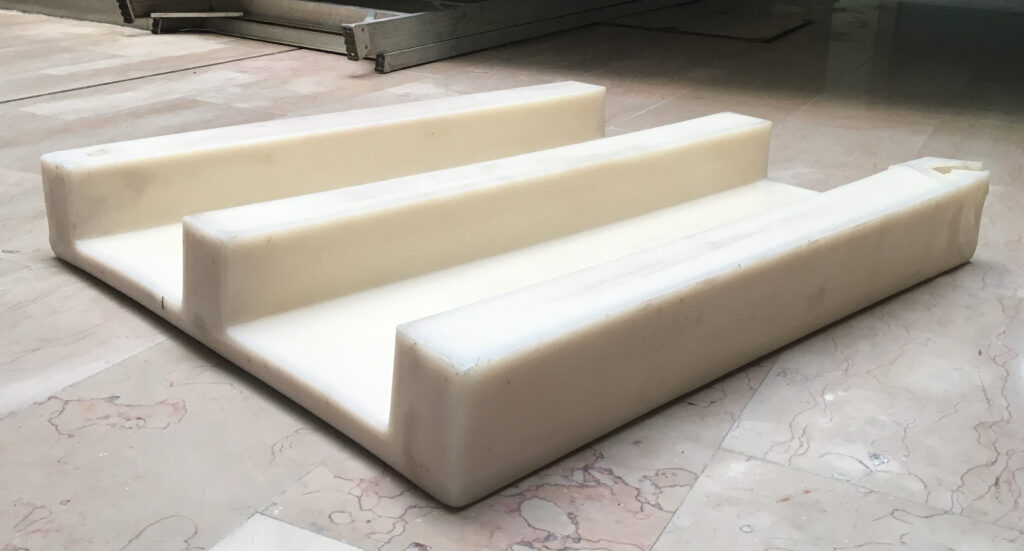
4- Fiberglass Pallet
Fiberglass material is a form of reinforced plastic, mostly thermosetting polymers which are embedded with glass fiber. Pallets made of fiberglass material are noticeably strong and durable, with high impact and hit resistance. The nature of Fiberglass causes fire-retardant Fiberglass plastic pallets, which can use in many industries such as automotive, medical, aerospace, and food processing. Very few manufacturers are capable of producing fiberglass pallets contributes to market privileges. The inherent benefits of fiberglass pallets, such as incredible strength, fir-resistance, high durability, notable flex resistance, and robustness, make the pallet unique and reliable for many applications. However, limited access to fiberglass pallets in the markets, the difficulty in the manufacturing process, and expensive materials cause the high cost of fiberglass pallets, and hence, many industries cannot afford the price.
IranPlast Group is here to offer you different types of Plastic Pallets based on the injection molding method. We are using Virgin HDPE and PP Copolymer injection grades as well as PO injection grades to produce various types of plastic pallets. We are doing our best to match the plastic pallets based on your applications. For any more information and technical data, please feel free to CONTACT US.

